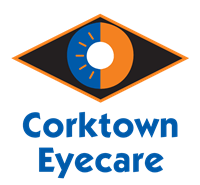Most people who wear glasses or contact lenses have heard of LASIK. LASIK, which stands for laser in-situ keratomileusis, is a type of surgery that uses lasers to treat vision problems caused by refractive errors.
Even though LASIK can be effective in eliminating the need for eyeglasses or contact lenses, not everyone is eligible for the procedure. For those who don’t qualify for LASIK surgery or who wish to try a different type of surgery, there are a number of other options available.
LASEK
LASEK (laser-assisted subepithelial keratectomy) is one of the best alternatives to LASIK for those who have thin or flat corneas. During the procedure, the epithelial flap is created using a trephine, and peeled back to expose the Bowman’s layer of the cornea. A single laser then reshapes the cornea and a protective contact lens is placed on the eye for several days to help the epithelium regrow.
LASEK does not involve the removal of the epithelium.
Photorefractive keratectomy (PRK)
PRK stands for photorefractive keratectomy, and was the first major form of refractive laser eye surgery treatment to be used. Most surgeons no longer offer PRK, as the results and recovery periods may be slower and less effective than those offered by LASIK and LASEK.
For PRK the surgeon removes the entire epithelium, the thin outermost layer of the cornea, in order to expose the Bowman’s layer. The surgeon then uses the laser to reshape the cornea. Once the procedure is done, the surgeon will put a soft contact lens as a ‘bandage’ to protect the eye while the epithelium is regrowing. The patient will also get painkillers to take during the recovery period.
The laser used in PRK is the same as the one used in LASIK. The difference is whether the epithelium is used to create a flap or removed entirely. PRK is a great alternative for people who have thin corneas or would benefit from having a completely new epithelium.
Phakic Intraocular Lenses
Phakic intraocular lenses (IOLs), also known as implantable contact lenses or ICLs, can be a good option for people who have high degrees of refractive error. Phakic IOLs are surgically implanted lenses that are inserted inside the eye, either directly in front of or behind the iris, allowing you to continue to focus with your natural lens. The lenses are made of a synthetic material that can be removed for cataract surgery years later, when one gets older.
Refractive Lens Exchange
Another option is refractive lens exchange surgery (RLE), which involves removing one's natural lens and replacing it with an intraocular lens implant. The technique is similar to cataract surgery in that it removes the lens of the eye and replaces it with a new lens. The new lens provides the ability to see clearly at both far and close distances. RLE is a good alternative for patients who have severe nearsightedness, farsightedness, presbyopia or astigmatism or if the surgeon feels that laser surgery is not the best option. RLE has a high success rate in both younger and older patients.
SMILE
SMILE (small incision lenticule extraction) helps treat both nearsightedness and astigmatism. A tiny incision is made in the cornea using a femtosecond laser. The laser forms a thin disc within the layers of the cornea through this incision, which is removed to alter the cornea's curvature and improve the eye's focusing capacity.
Overall, these procedures work well for people with moderate to severe vision problems and aren’t good candidates for LASIK. These alternative eye surgeries provide more people with the ability to experience the benefits of vision correction surgery. If you are interested in one of these LASIK alternatives, contact Corktown Eyecare in Toronto today!
At Corktown Eyecare, we put your family's needs first. Talk to us about how we can help you maintain healthy vision. Call us today: 647-694-7600 or book an appointment online to see one of our Toronto eye doctors.
Want to Learn More? Read on!
FOLLOW US:


